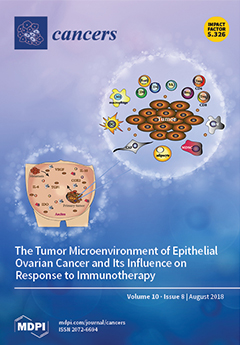Open AccessReview
The Current Role of Salvage Surgery in Recurrent Head and Neck Squamous Cell Carcinoma
by
Marc Hamoir, Sandra Schmitz, Carlos Suarez, Primoz Strojan, Kate A Hutcheson, Juan P Rodrigo, William M Mendenhall, Ricard Simo, Nabil F Saba, Anil K D‘Cruz, Missak Haigentz, Jr., Carol R Bradford, Eric M Genden, Alessandra Rinaldo and Alfio Ferlito
Cited by 78 | Viewed by 5437
Abstract
Chemoradiotherapy has emerged as a gold standard in advanced squamous cell carcinoma of the head and neck (SCCHN). Because 50% of advanced stage patients relapse after nonsurgical primary treatment, the role of salvage surgery (SS) is critical because surgery is generally regarded as
[...] Read more.
Chemoradiotherapy has emerged as a gold standard in advanced squamous cell carcinoma of the head and neck (SCCHN). Because 50% of advanced stage patients relapse after nonsurgical primary treatment, the role of salvage surgery (SS) is critical because surgery is generally regarded as the best treatment option in patients with recurrent resectable SCCHN. Surgeons are increasingly confronted with considering operation among patients with significant effects of failed non-surgical primary treatment. Wide local excision to achieve clear margins must be balanced with the morbidity of the procedure, the functional consequences of organ mutilation, and the likelihood of success. Accurate selection of patients suitable for surgery is a major issue. It is essential to establish objective criteria based on functional and oncologic outcomes to select the best candidates for SS. The authors propose first to understand preoperative prognostic factors influencing survival. Predictive modeling based on preoperative information is now available to better select patients having a good chance to be successfully treated with surgery. Patients with a high comorbidity index, advanced oropharyngeal or hypopharyngeal primary tumors, and both local and regional recurrence have a very limited likelihood of success with salvage surgery and should be strongly considered for other treatments. Following SS, identifying patients with postoperative prognostic factors predicting high risk of recurrence is essential because those patients could benefit of adjuvant treatment or be included in clinical trials. Finally, defining HPV tumor status is needed in future studies including recurrent oropharyngeal SCC patients.
Full article






